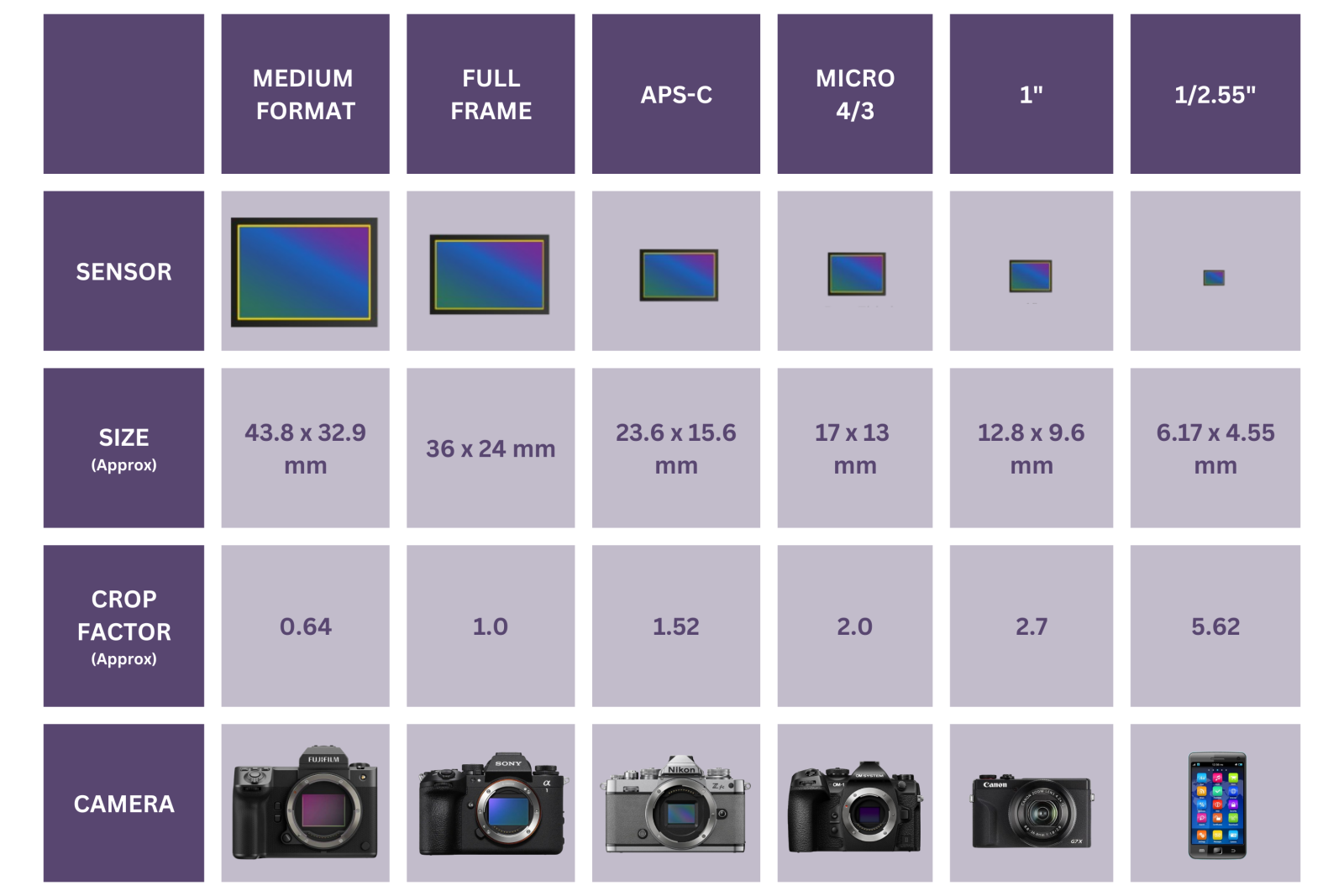How Sensor Size Affects Your Photos: A Comprehensive Guide to Choosing the Right Camera
In the dynamic world of digital photography, the camera sensor significantly influences the outcome of your images. Whether you're a professional photographer or a passionate amateur, understanding the role of sensor size in photography is essential for utilising your camera's capabilities to their fullest. This comprehensive guide will delve into how different sensor sizes affect image quality, depth of field, and performance in various lighting conditions, helping you make informed choices for better photography results.
Understanding Camera Sensors:
A camera sensor is essentially the heart of your camera, capturing light through the lens and converting it into digital images. The size of the sensor in your digital camera plays a fundamental role in determining the quality of your photos, affecting everything from light sensitivity to detail resolution. Understanding sensor size is critical for anyone looking to enhance their photographic skills and produce superior images.

Types of Camera Sensors Explained:
Medium Format Sensors:
Larger than full-frame, medium format sensors can vary in size but typically measure around 44mm x 33mm. These sensors are mostly found in high-end cameras used by professional photographers, such as those from Fujifilm.
Advantages: Medium format sensors offer exceptional image quality with more detail, greater dynamic range, and better colour accuracy. They are particularly favoured for commercial photography, studio work, and landscape photography where detail and large print sizes are important.
Full-Frame Sensors:
Full-frame sensors, measuring approximately 36mm x 24mm, are common in professional-grade cameras from brands like Sony, Canon, Nikon, and Panasonic. They offer a sensor size equivalent to a traditional 35mm film format.
Advantages: Full-frame sensors excel in capturing more light, which enhances the image's dynamic range, reduces noise in low-light conditions, and improves overall sharpness and colour depth. Ideal for professional portrait photography and high-quality landscape shots.
APS-C Sensors:
These sensors, typically about 22mm x 15mm in size, are a popular choice in entry-level to mid-range DSLR and mirrorless cameras from Canon, Nikon, Sony, and Fujifilm.
Advantages: APS-C sensors provide an excellent balance between quality and cost, offering a cropped view compared to full-frame cameras, which effectively increases the focal length of lenses for detailed wildlife and sports photography.
Micro Four Thirds:
With a sensor size of 17mm x 13mm, Micro Four Thirds cameras are prominently used by OM SYSTEM (formerly Olympus) and Panasonic.
Advantages: These sensors are particularly favoured for their compact and lightweight design, making them excellent for documentary-style photography, street photography, and travel photography where portability is key.
1-inch Sensors:
At approximately 12.8mm x 9.6mm, 1-inch sensors are often found in premium compact cameras from Canon, Sony and Panasonic.
Advantages: They offer superior image quality compared to smaller sensors like those in smartphones, while still maintaining a compact size perfect for casual photography and vlogging.
Impact of Sensor Size on Image Quality:
Low Light Photography: Larger sensors are inherently better at capturing low-light scenes with less noise, making them perfect for night photography and indoor events where lighting is suboptimal.
Depth of Field Control: The size of the sensor directly impacts depth of field. Photographers who use larger sensors such as full-frame or medium format enjoy a shallower depth of field, allowing for stunning bokeh effects in portrait photography and detailed macro photography.
Resolution and Clarity: Larger sensors typically support higher resolutions without degrading image quality, which is crucial for commercial photography and fine art photography where detail and clarity are paramount.
Choosing the Right Sensor Size for Your Photography Style:
Landscape and Cityscape Photography: Medium format and full-frame cameras are preferred for their wide dynamic range and ability to capture expansive and detailed scenes.
Action and Wildlife Photography: APS-C cameras are ideal due to their crop factor that magnifies distant subjects, making them excellent for capturing fast-moving sports and elusive wildlife.
Everyday and Travel Photography: Micro Four Thirds and 1-inch sensor cameras strike the perfect balance between image quality and portability, suitable for bloggers and travel enthusiasts who require good performance on the move.
Final Thoughts: Choosing the right sensor size is pivotal in shaping the photographic capabilities and outcomes of your camera. Each type of sensor offers unique benefits that can enhance different aspects of photography. Whether your focus is achieving professional-grade portraits, capturing expansive landscapes, or documenting daily life and travels in high quality, there's a sensor designed to meet your needs. By selecting the appropriate camera sensor size, photographers can significantly enhance their creative potential and effectively convey their vision. For more tailored advice on selecting the perfect camera and sensor size, contact our expert team at Digital Camera Warehouse, where we provide in-depth insights and recommendations to help you make the best choice for your photography journey.
